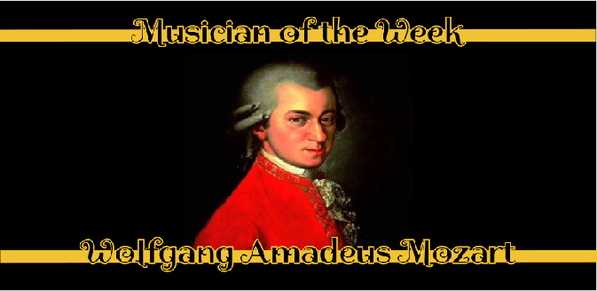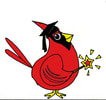|
|
|
|
Mozart is widely recognized as one of the greatest composers in the history of music. Along with Haydn and Beethoven, he helped bring the Viennese Classical style of the 18th-century to its greatest achievement. Mozart was a genius. He was a versatile composer who wrote masterpieces in all the musical forms of his time: symphonies, string quartets, concertos for various instruments, masses, chamber music and operas.
Mozart's music 'sings', and conveys ease, gracefulness, and spontaneity as well as balance, restraint, and proportion. It fuses elegance with power. Our listening example is one that is used often in today's popular culture and recognized by many. |
|
Did you know that Mozart was one of the first super-stars?
Mozart was one of the most amazing child prodigies in history. He was born in Salzburg, Austria. By the age of six, he could play the harpsichord and violin, improvise complex forms of music, write dances called minuets, and read music perfectly at first sight. At eight, he wrote a symphony; at eleven, an oratorio; and at age twelve, he wrote his first opera. Mozart's father, Leopold, a court musician, was eager to show him off. Between the ages of six and fifteen Mozart was continually on tour. He played for Em |
|
|
|

|
Wolfgang’s father, Leopold, was a successful musician who worked for the Salzburg court. When Nannerl began her piano lessons at the age of 7, 3 year old Mozart was always right there, listening and learning. He would mimic, or copy, what she Nannerl was doing as she played the piano, and soon he was able to play piano, build cords and write music.
|
|
Mozart’s first music teacher was his father, Leopold. Leopold was strict and expected perfection from his children, but he was also a fun teacher who liked to find exciting ways of teaching. By the age of 5, Mozart had already written his first composition and was well on his way to mastering the harpsichord as well as the violin.
|
|
|
|
|
Wolfgang Amadeus Mozart seemed to have music in his head. He could pick up a violin and play it, without being shown how.
Mozart and his sister were very good friends. They spent so much time playing together that they invented their own secret language. They would often pretend they were the King and Queen of their own village. |
|
|
|
|
When Wolfgang Amadeus Mozart was only 13 years old, his father took him on a trip to Italy. He wanted to show off Mozart’s talents to all the important rich people in Italy.
While they were in Italy, Mozart and his father went to a concert at the Sistine Chapel. Mozart had never heard the music before, and no one had ever allowed this music to be copied and shared outside of the Sistine Chapel. However, when Mozart got home from the performance, he sat down and wrote out the music from memory. |
|
Mozart and his father returned from Italy in 1773. Mozart was only 17 years old at the time, and he got his first job. He was the assistant concertmaster at the same place his father worked. It was in this job that Mozart was able to learn about different genres of music. He also composed 6 violin concertos while working there.
|
|
|
|
|
People all over the world still love Mozart’s music. His operas are still performed in famous opera houses throughout the world. There have been many research studies that show that listening to Mozart’s music while you study can help you to remember the information you’re studying. It has also been proven to make you calmer when you listen to it.
|
|
|
|
